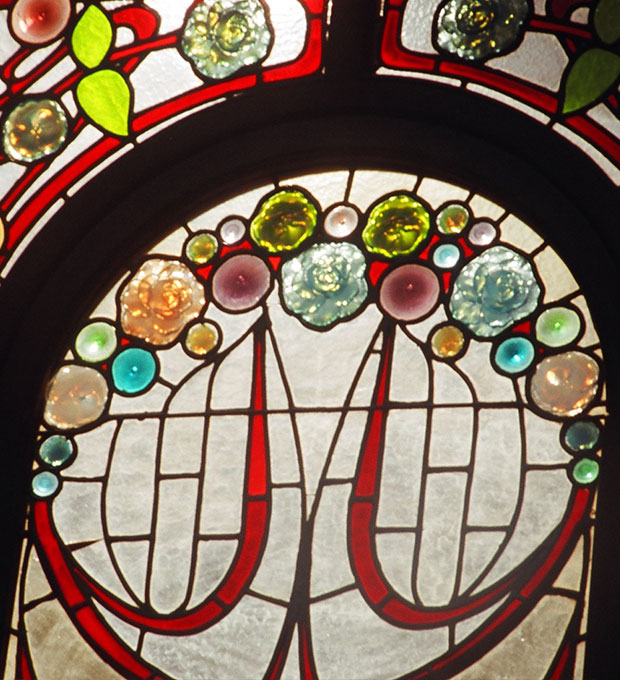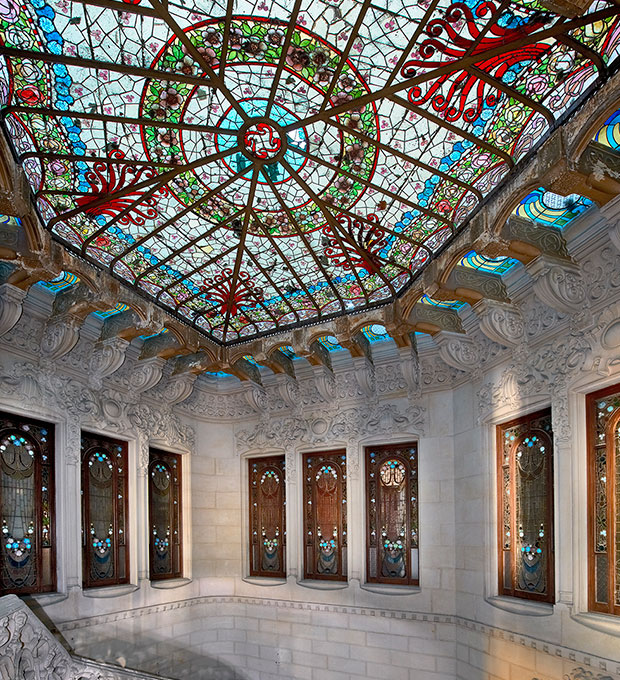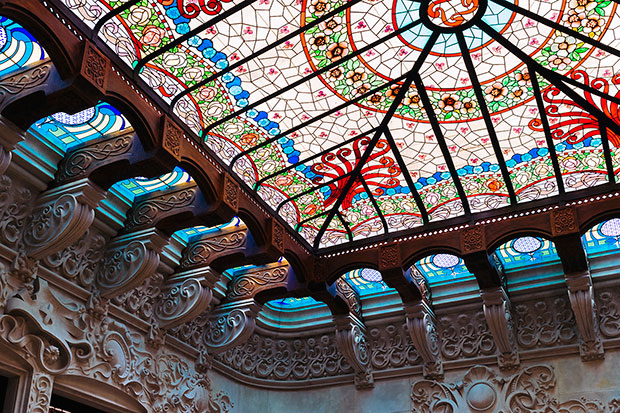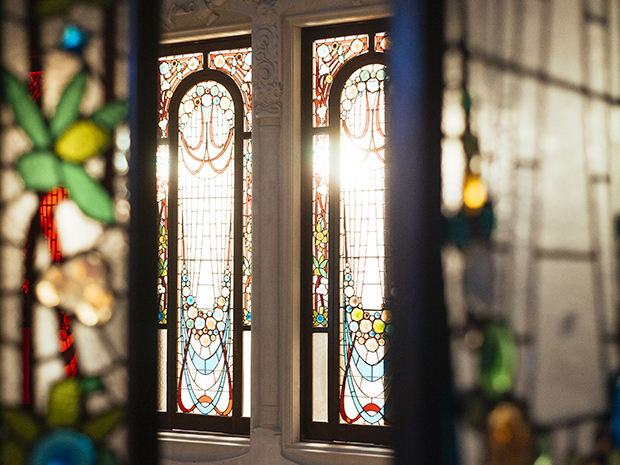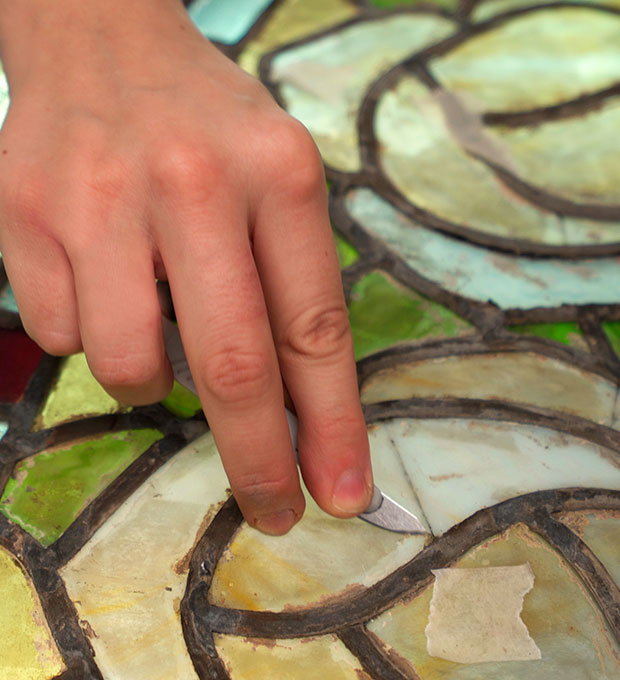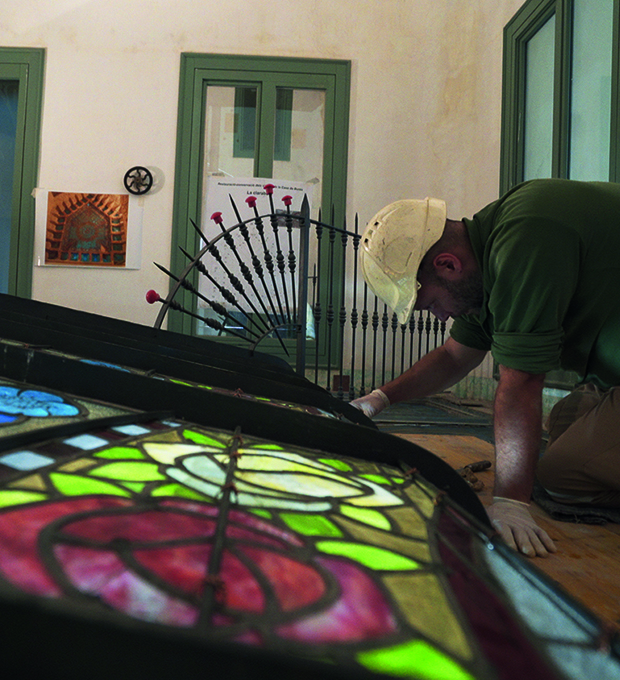The first use of stained glass in Modernism dates back to the end of the 19th century. Stained glass windows were very popular during the Gothic period, but they became less common over the centuries until Modernism brought back a wide range of applied arts, including stained glass for both religious buildings and private homes.
The origin of this recovery in the 1860s can be attributed to the English and the many glass workshops and factories. New workshops sprang up in Catalonia and began manufacturing highly elaborate stained glass.


